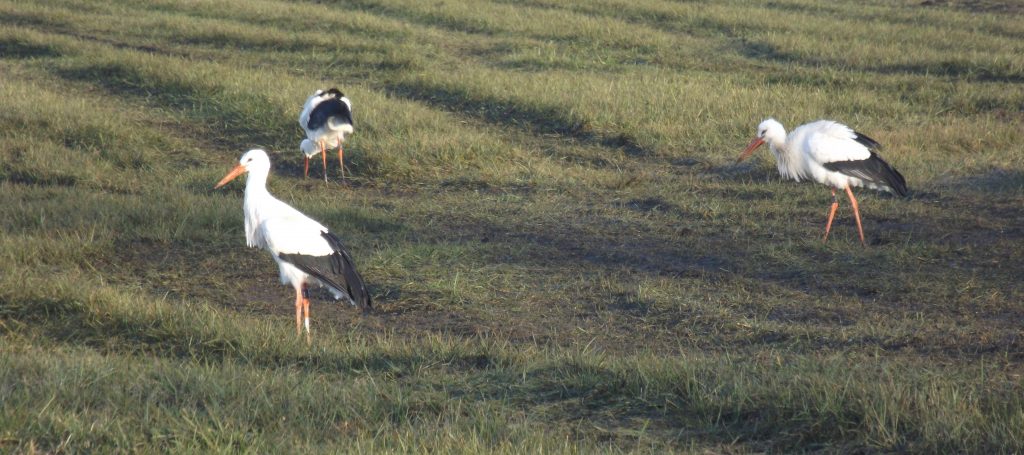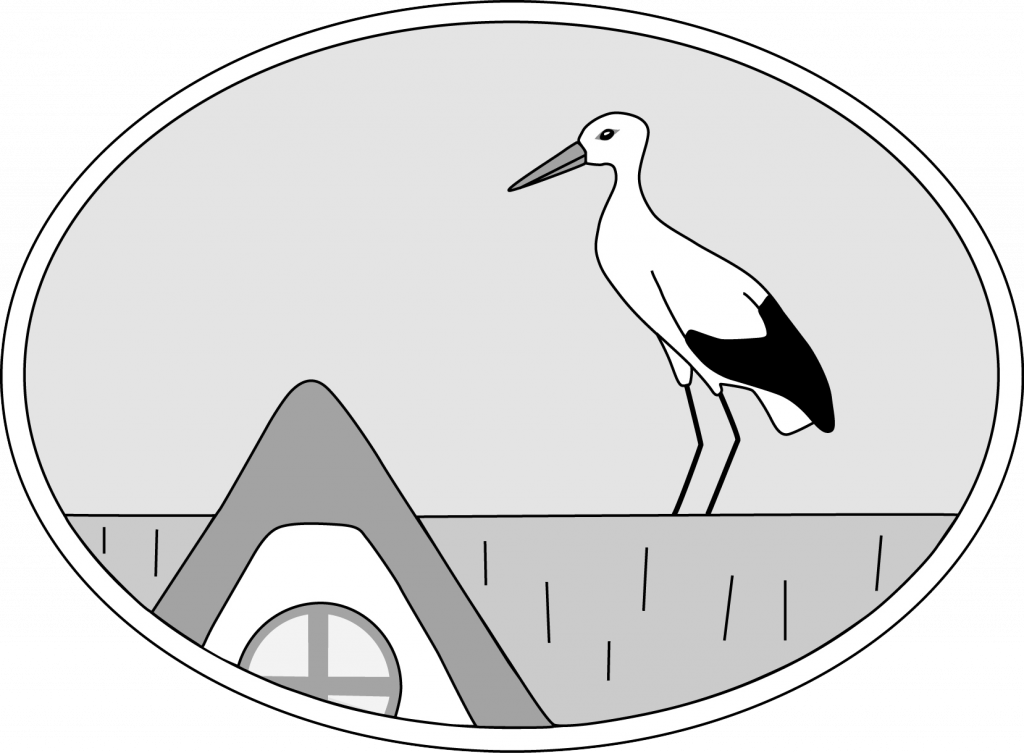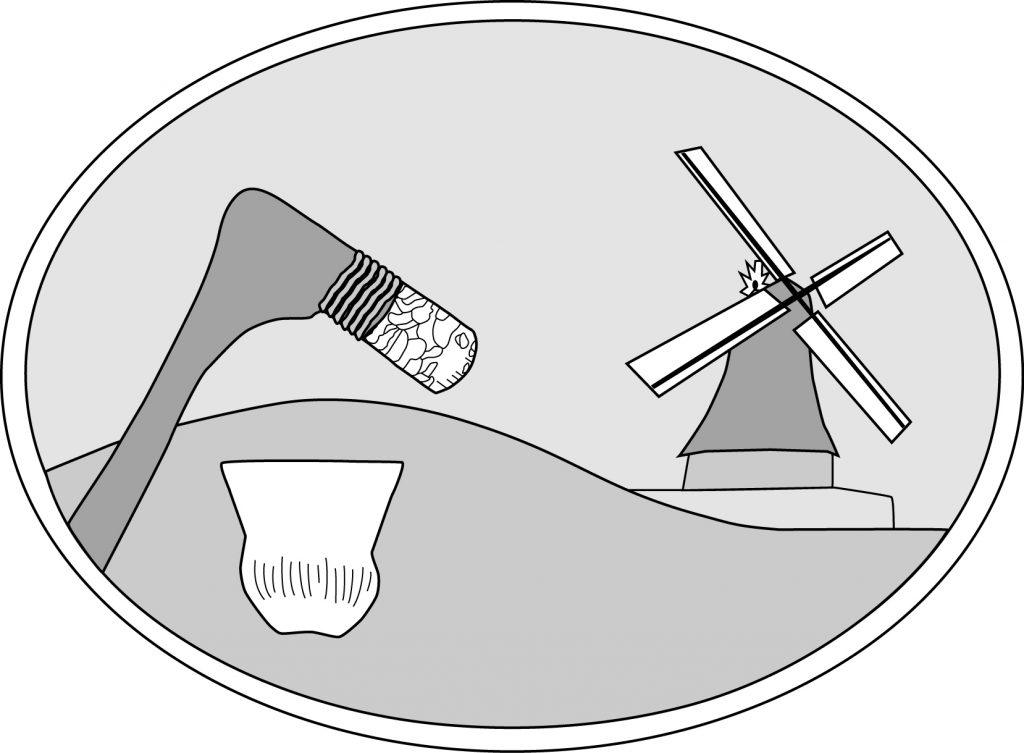
As far as food is concerned, the white stork is an opportunist: it takes what is plentiful and easy to capture. Its diet includes mice, rats, lizards, fish and, of course, frogs. They are often seen following tractors, because the freshly mown meadows offer them a feast: previously well-hidden prey is now easy to find.
In pursuit of prey, the storks stride through the meadows and then swoop down on the prey in a flash with their beaks. An adult stork needs about one seventh of its own body weight in food per day. With an average weight of 3.5 kg, this amounts to 500 g. Larger prey is devoured whole. The indigestible parts of the prey are, as with owls, spat out again in the form of pellets.
Initially, one parent stays with the young while the other searches for food in a close range of about 2.5 km around the nest. The main food for the young chicks consists mostly of earthworms and insects. After about three weeks, both parents have to search for food at the same time: A young stork now needs up to 1.5 kg of food per day! The greater the food supply, the more chicks will survive.
After fledging, the family goes foraging together. Often the food they collect is then brought to the nest and only eaten there. The young beg for food both in the nest and in the field. Later, the parents wean their young by no longer going to the nest but waiting on a nearby roof.



